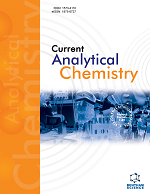
Full text loading...

Bioactive compounds with unique functional properties derived from marine bivalves have been gaining increasing attention. Marcia hiantina is a bivalve clam found in many coastal regions of the Philippines but is underutilized despite its nutritional value. The study aimed to isolate bioactive compounds from M. hiantina using a mass spectrometry-guided technique to separate target analytes and characterize their biological activities.
Bioactive fractions were detected by combining Liquid Chromatography-Mass Spectrometry (LC-MS) and High-Performance Liquid Chromatography (HPLC) with biological assays. The bioactive compounds were subsequently identified using Ultra-High-Performance Liquid Chromatography-Elevated Energy Mass Spectrometry (UHPLC–MSE).
A UHPLC-MSE analysis of the isolate revealed polymeric Tryptophan (Trp) and its metabolites. The M. hiantina-derived peptide exhibited inhibitory effects on the proliferation of human breast cancer cells (MCF-7), with an IC50 value of 95.20 ± 0.11 μg/mL, measured by 3-(4,5-dimethylthiazol-2-yl)-2,5-diphenyltetrazolium bromide (MTT) assay. Moreover, the peptide also inhibited the growth of both Gram-positive and Gram-negative bacterial strains and demonstrated strong antioxidant potential as a 2,2-diphenyl-1-picrylhydrazyl (DPPH) scavenger (73.54% at 2.5 mg/mL).
The presence of Trp metabolites, including indole and indole-3-propionic acid in M. hiantina may result from the host-microbe interactions, or be influenced by environmental stress, as Trp requirements in clams increase under oxidative conditions, reflecting their adaptation to stressors like intermittent hypoxia and pollutants.
This study revealed that M. hiantina is a new source of bioactive compounds, and can be a promising novel ingredient in functional foods promoting health and well-being.

Article metrics loading...

Full text loading...
References


Data & Media loading...
Supplements